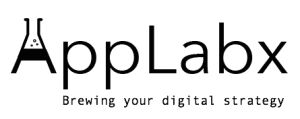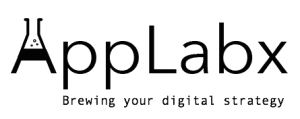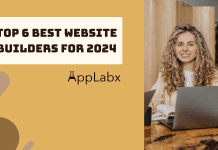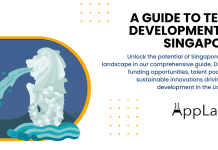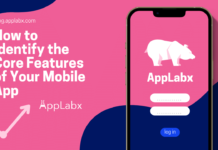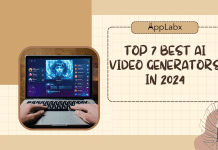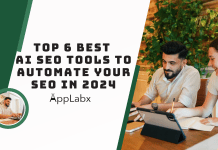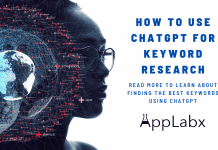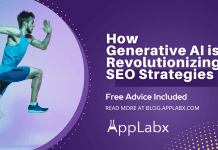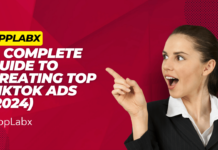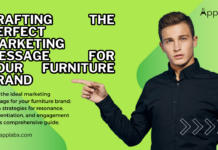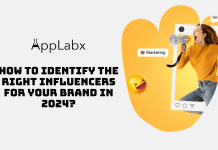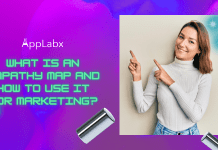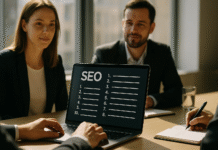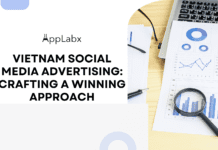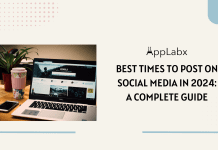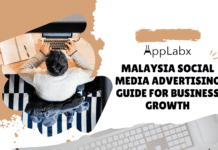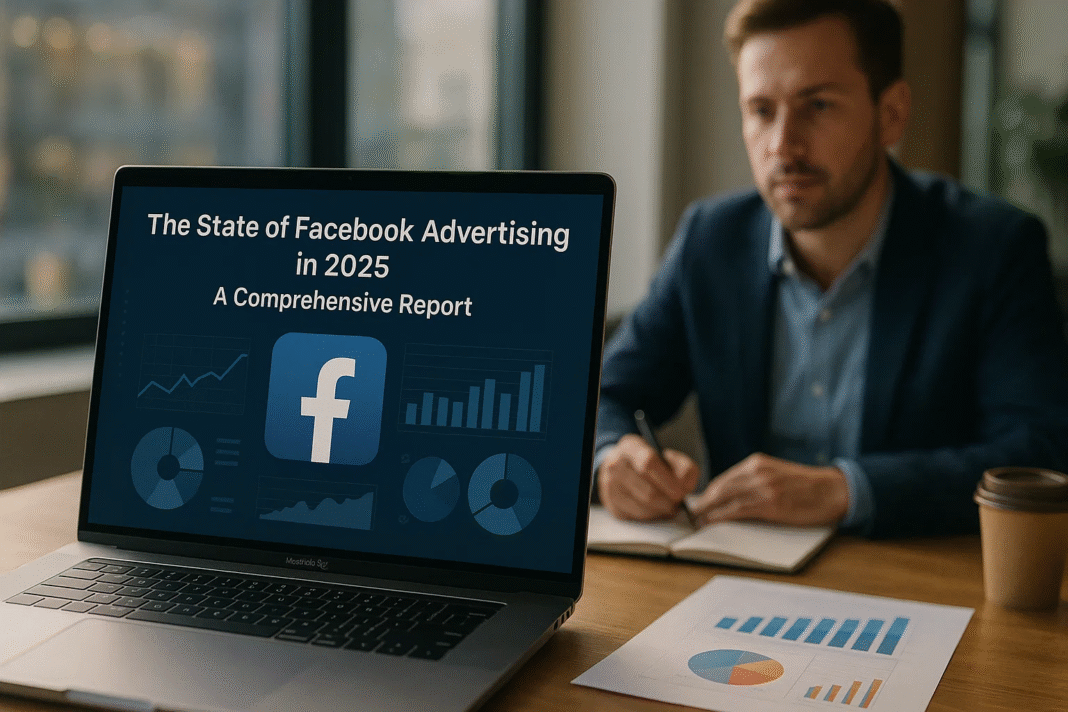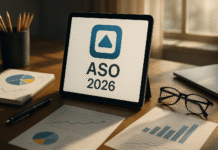Key Takeaways
- Facebook advertising in 2025 is driven by AI automation, broad targeting, and first-party data strategies for accurate optimization.
- Creative quality and video-first campaigns are now the strongest drivers of performance, engagement, and conversions.
- Multi-platform funnels and hybrid human-AI models are essential to maximize reach, improve attribution, and boost ROI.
Facebook advertising in 2025 has reached an unprecedented level of sophistication, marking a decisive shift toward an ecosystem that is both algorithmically intelligent and strategically demanding for advertisers. Meta’s advertising platform continues to serve as the backbone of digital marketing, accounting for a significant share of global ad spend and offering one of the most powerful, data-rich environments for businesses to connect with consumers. However, the landscape today is radically different from what it was just a few years ago. Rising costs, privacy-first policies, the decline of third-party cookies, and the emergence of generative AI tools have forced marketers to adopt a new playbook — one that blends creativity, first-party data, and automation to compete effectively in an increasingly competitive arena.
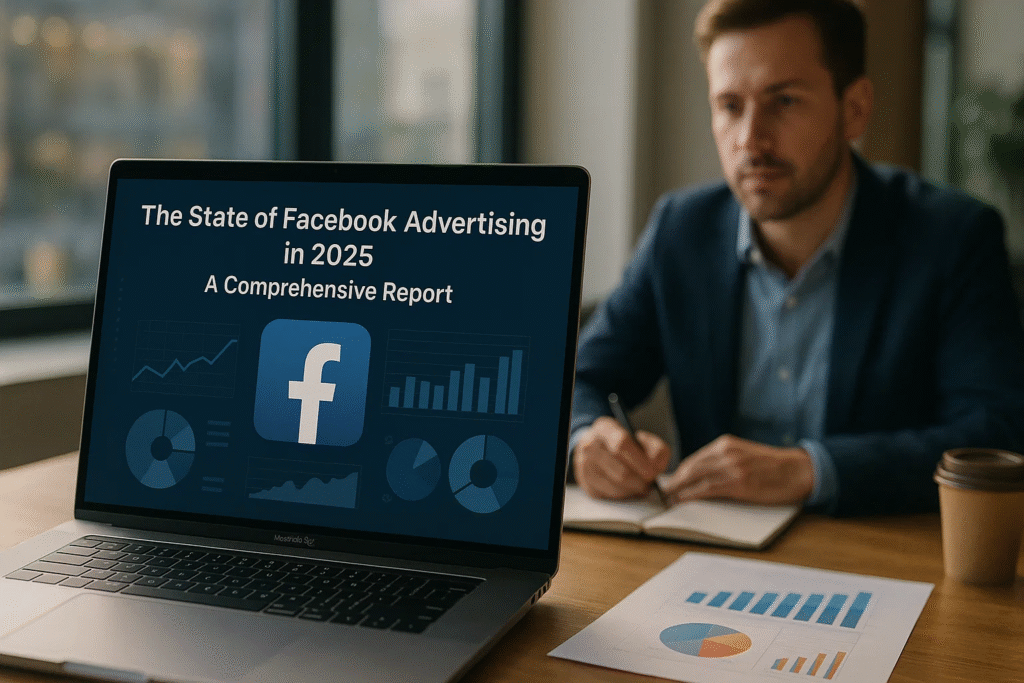
Facebook Advertising as a Core Growth Channel
Meta’s advertising products — spanning Facebook, Instagram, Messenger, and Audience Network — remain at the heart of global performance marketing strategies. In 2025, Meta’s ad business continues to generate nearly all of its revenue, underscoring its role as a primary monetization engine. With over 3 billion monthly active users, the platform offers brands a unique opportunity to reach audiences at scale, but also demands a higher level of strategic and technical expertise to achieve measurable results.
The Evolution of Advertising Economics
Ad costs have risen considerably in 2025, with CPMs and CPCs climbing year-over-year across nearly every industry. While this has put pressure on advertising budgets, it has also led to a new paradigm where the quality of impressions and clicks is higher than ever before. Advanced machine learning infrastructure, such as Meta’s Andromeda system, ensures that ads are delivered to users with the highest likelihood of engagement, improving conversion rates and boosting ROI for advertisers who approach campaigns strategically.
The Role of AI and Automation
Artificial intelligence has moved from being an optional enhancer to becoming the very core of the Meta advertising ecosystem. Tools like Advantage+ Campaigns, Advantage+ Audience, and generative AI-powered creative solutions have automated the once-manual processes of targeting, bidding, and ad creation. This transformation has redefined the role of the marketer, who now must act as a strategic architect rather than a manual campaign manager — focusing on feeding the AI high-quality data, compelling creatives, and clear performance signals.
The Privacy-First Future
Perhaps the most profound shift shaping Facebook advertising in 2025 is the tightening of global privacy regulations and technology changes led by Apple’s iOS updates and Google’s Privacy Sandbox. These developments have forced advertisers to rethink how they measure success and attribute conversions. First-party data strategies, server-side event tracking (via Conversions API), and robust CRM integrations are no longer nice-to-haves — they are essential for survival in this new data-limited world.
A Strategic Outlook
This report provides an in-depth, data-driven analysis of the state of Facebook advertising in 2025, exploring the key market dynamics, technological advancements, and strategic imperatives that marketers must embrace. From rising media costs and AI-driven campaign optimization to multi-platform funnel integration and the new creative-first paradigm, it serves as a comprehensive playbook for advertisers seeking to thrive in today’s complex ecosystem. Businesses that succeed will be those that combine innovative storytelling with disciplined data practices and leverage Meta’s machine learning infrastructure as a force multiplier for growth.
But, before we venture further, we like to share who we are and what we do.
About AppLabx
From developing a solid marketing plan to creating compelling content, optimizing for search engines, leveraging social media, and utilizing paid advertising, AppLabx offers a comprehensive suite of digital marketing services designed to drive growth and profitability for your business.
At AppLabx, we understand that no two businesses are alike. That’s why we take a personalized approach to every project, working closely with our clients to understand their unique needs and goals, and developing customized strategies to help them achieve success.
If you need a digital consultation, then send in an inquiry here.
Or, send an email to [email protected] to get started.
The State of Facebook Advertising in 2025: A Comprehensive Report
- The Macro-Economic Landscape: A Fortress Built on Data and Scale
- Performance Benchmarks and Cost Dynamics: The Numbers That Matter
- The Technological Transformation: AI as the New Core
- `The Privacy Imperative: Adapting to a Data-Limited World
- Strategic Playbook for 2025: Winning the New Game
- Recommendations
1. The Macro-Economic Landscape: A Fortress Built on Data and Scale
a. Financial Performance and User Dominance
The Macro-Economic Landscape: Data-Driven Growth and Unmatched Scale
Financial Performance and Revenue Trajectory
Meta’s advertising division continues to dominate as the core driver of its financial success in 2025. During Q2 2025, advertising revenue reached $46.56 billion, representing approximately 98% of Meta’s total earnings for the quarter. This performance signifies an impressive 22% year-over-year growth, a surge attributed to two key growth levers:
- Rising Global Ad Impressions – An 11% increase in the number of ads delivered across the platform indicates higher engagement levels and inventory availability.
- Growing Cost per Ad – A 9% increase in average ad pricing demonstrates advertisers’ willingness to pay more for targeted, high-performing placements.
Projections suggest that this upward momentum will persist, with Q3 2025 advertising revenue forecasted at $48.44 billion, representing a 21% annual growth rate.
| Metric | Q2 2025 | YoY Change | Projected Q3 2025 |
|---|---|---|---|
| Advertising Revenue | $46.56 billion | +22% | $48.44 billion (+21%) |
| Global Ad Impressions | ↑ 11% | Positive | Expected Growth Continues |
| Average Price per Ad | ↑ 9% | Positive | Stable or Slightly Rising |
This sustained growth highlights Meta’s ability to combine scale with precision targeting, ensuring advertisers achieve meaningful returns on their ad spend.
User Dominance and Platform Scale
Facebook’s ecosystem remains unmatched in its ability to reach audiences worldwide. As of mid-2025:
- Monthly Active Users (MAUs): Facebook alone surpasses 3 billion MAUs, maintaining its position as the most widely used social media platform globally.
- Daily Active Users (DAUs): The Meta family of apps—including Instagram, WhatsApp, Messenger, and Facebook—collectively reaches 3.35 billion DAUs, reflecting an impressive 6% YoY growth.
- User Engagement: DAUs across all platforms reached 3.48 billion in June 2025, a testament to Meta’s continued ability to keep users engaged despite increasing competition.
| Platform | MAUs / DAUs (2025) | YoY Growth |
|---|---|---|
| 3B MAUs | Stable | |
| Instagram + Others | 3.35B DAUs | +6% |
This user dominance translates into a massive inventory for advertisers, reinforcing Meta’s position as a critical channel for brands seeking global reach and engagement.
Market Dynamics: Efficiency, Competition, and Strategic Imperatives
Meta’s advertising ecosystem is becoming more auction-efficient, leading to better matching between advertisers and high-intent users. This refinement means:
- More Relevant Ads: Algorithms are serving ads to users who are statistically more likely to engage, improving conversion rates.
- Higher Advertiser Bids: Better performance justifies higher bids, further driving up the cost per ad and boosting overall revenue.
- Virtuous Growth Cycle: Rising ad prices are tied directly to enhanced performance, creating a feedback loop where advertisers see improved ROI, incentivizing them to reinvest and scale campaigns.
This dynamic also places pressure on brands to invest strategically, leveraging first-party data, creative optimization, and AI-driven campaign management to remain competitive in a marketplace where costs are increasing alongside quality.
b. Global Ad Spend: Regional and Vertical Market Share
Regional Revenue Distribution and Growth
Meta’s advertising revenue in 2025 reflects a sophisticated and strategically diversified global footprint, with North America remaining the dominant revenue engine. The platform’s regional distribution shows a pronounced concentration of spend but also underscores emerging growth opportunities in developing markets.
| Region | Ad Revenue (2025) | YoY Growth | Share of Global Ad Spend | Key Growth Drivers |
|---|---|---|---|---|
| North America | $79.3B | +5.8% | >50% | Mature ad ecosystem, strong demand for performance campaigns |
| Asia-Pacific | $42.6B | +7.1% | 27% | Rising mobile-first advertising, expansion of digital commerce |
| Europe | $26.4B | +4.3% | 16% | Continued investment from retail, luxury, and fintech sectors |
| India | $3.3B | +19.6% | 2.1% | Surge in SMB participation, vernacular content growth |
| MENA | $4.1B | +13.2% | 2.6% | Booming e-commerce, growing influencer economy |
| Latin America | $6.8B | +8.4% | 4.4% | Brazil and Mexico driving adoption through e-commerce expansion |
This geographic distribution demonstrates Meta’s ability to balance mature, high-yield markets with fast-growing, underpenetrated regions. The growth in India and MENA signals that advertisers are increasingly seeking audiences in mobile-first economies, where Facebook and Instagram are central to the digital consumer experience.
Vertical Market Performance and Strategic Allocation
Beyond geography, the vertical segmentation of ad spend reveals clear winners in terms of conversion performance and return on investment. Retail and e-commerce continue to lead as the highest-performing sectors on Meta’s platforms, with a 10.2% average conversion rate — significantly above the cross-industry benchmark.
| Vertical | Ad Spend (2025) | YoY Change | Conversion Rate | Key Observations |
|---|---|---|---|---|
| Retail & E-commerce | Highest share | +11.5% | 10.2% | Dominates ad conversions; driven by AI-driven dynamic product ads |
| Automotive | $4.1B | +12.6% | 6.8% | Significant shift toward online lead generation campaigns |
| Finance & Fintech | Growing | +8.2% | 5.9% | Increasing focus on app installs and account sign-ups |
| Consumer Goods | Steady | +6.1% | 5.2% | Brand-building campaigns remain key |
| Travel & Hospitality | Rebounding | +14.4% | 7.3% | Post-pandemic travel surge fueling ad growth |
The Rise of Stories and Short-Form Ad Inventory
An important structural shift in Meta’s ad ecosystem is the rapid adoption of Stories and full-screen vertical creative formats. Ad revenue from Facebook Stories surged to $18.2 billion in 2025, representing 21.8% of total ad inventory. This indicates a clear pivot towards immersive, mobile-first advertising experiences that cater to evolving user consumption patterns.
Key Implications:
- Higher Engagement: Stories offer prime real estate for interactive ads, resulting in higher click-through and conversion rates.
- Creative Innovation: Brands are investing more in vertical video, interactive polls, and dynamic creative optimization to capture user attention.
- Strategic Imperative: Marketers are allocating larger portions of their budgets to Stories and Reels, aligning with user behavior trends favoring short-form content.
Strategic Takeaways for Advertisers
The 2025 data highlights a dual imperative for brands: invest in mature regions for stability while capturing growth opportunities in emerging markets. Successful advertisers are leveraging AI-driven campaign optimization, localizing creative to match regional preferences, and prioritizing high-conversion ad formats like Stories.
c. Competitive Analysis: A Comparison with Key Platforms
The Expanding Social Media Ad Market
The global social media advertising market is forecasted to surpass $276 billion by the end of 2025, marking one of the most lucrative digital ecosystems in the marketing landscape. While Meta remains the undisputed leader, the competitive environment has intensified with platforms like TikTok, Snapchat, and emerging social commerce players vying for advertiser budgets.
| Platform | Monthly Active Users (2025) | Average ROAS | Key Strengths | Key Challenges |
|---|---|---|---|---|
| Meta (Facebook + Instagram) | 3.35B (combined DAUs) | 2.19x | Scale, precision targeting, high-intent conversions | Rising ad costs, user saturation in mature markets |
| TikTok | 1.6B | 1.41x | Creative, trend-driven engagement, strong Gen Z appeal | Lower conversion efficiency, potential regulatory risks |
| Snapchat | 750M | ~1.35x | AR ad innovation, strong youth market penetration | Smaller reach compared to Meta and TikTok |
| YouTube | 2.7B | ~1.8x | Long-form video ads, brand safety, integration with Google Ads | Higher CPMs for premium inventory |
This comparison highlights Meta’s competitive edge in ROAS, driven by its advanced targeting infrastructure and ability to deliver measurable business outcomes across multiple industries.
The TikTok Factor and Market Reallocation
TikTok’s meteoric rise has pressured Meta to innovate aggressively in short-form content formats such as Reels and Stories. However, Meta maintains an advantage in monetization efficiency, largely due to its mature ad auction system and deep integration with e-commerce and conversion APIs.
A potential U.S. ban on TikTok represents a major inflection point for the social ad market:
| Scenario | Ad Spend Reallocation Impact | Projected Share Captured by Meta |
|---|---|---|
| TikTok Active | No reallocation | N/A |
| TikTok Partially Restricted | 20–30% spend shift to Meta | Majority absorbed by Instagram and Facebook |
| TikTok Fully Banned | 55% of spend reallocated | 40% → Instagram, 15% → Facebook |
This reallocation would significantly strengthen Meta’s hold over advertiser budgets, particularly for performance-driven campaigns targeting younger demographics. Instagram, in particular, is positioned to capture the lion’s share of these dollars due to its content format similarity and algorithmic reach.
Strategic Imperatives for Advertisers
Advertisers navigating this competitive environment should consider the following strategic actions:
- Diversification of Spend: While Meta delivers superior ROAS, maintaining a diversified portfolio across TikTok, YouTube, and emerging platforms hedges against market shifts and regulatory risks.
- Investment in Creative Optimization: As platforms converge on short-form video, creative excellence becomes a critical differentiator for maximizing engagement and conversion.
- Data and Privacy Readiness: Marketers must invest in first-party data strategies and leverage Meta’s Conversion API (CAPI) to offset signal loss from privacy regulations and maintain performance efficiency.
2. Performance Benchmarks and Cost Dynamics: The Numbers That Matter
a. Core Metrics: CTR, CPC, and CPM
Core Cost Metrics: CPC, CPM, and Lead Efficiency
The cost landscape of Facebook advertising in 2025 reflects a maturing marketplace characterized by heightened competition, algorithmic sophistication, and evolving user behavior. While costs have increased, Meta’s advertising ecosystem continues to deliver superior efficiency compared to competing platforms.
| Metric | Global Average (2025) | YoY Change | Key Insight |
|---|---|---|---|
| Cost Per Click (CPC) | $0.70 – $0.82 | +28.17% | Rising costs reflect intensified bidding competition and advertiser demand. |
| Cost Per 1,000 Impressions (CPM) | $8.15 (Meta Median) $5.97 (Global Avg.) | +28.44% | Indicates an increasingly premium ad inventory as targeting becomes more precise. |
| Cost Per Lead (CPL) | $27.66 (Meta) | Stable | Significantly more efficient than Google’s $70.11 CPL, underscoring Meta’s strength in lead generation. |
Despite the upward trajectory of CPC and CPM, the cost efficiency of Facebook ads — particularly in lead generation — remains one of its strongest selling points for performance marketers.
Engagement Rates and Creative Implications
Engagement rates are a critical indicator of how effectively brands capture user attention. In 2025, Facebook’s overall engagement rate sits at 0.063%, but the type of creative used plays a decisive role in performance outcomes.
| Content Format | Average Engagement Rate | Performance Insight |
|---|---|---|
| Text Posts | 0.07% | Lowest engagement; generally underperforms unless tied to high-value community updates. |
| Image Posts | ~0.12% | Performs moderately; useful for product showcases but lacks immersive appeal. |
| Video Posts | 0.17% | Stronger performance, driven by storytelling and dynamic content. |
| Reels (Short-Form Video) | 0.23% | Highest engagement; reflects user preference for vertical, immersive, and entertaining formats. |
This clear hierarchy of engagement emphasizes that video-first strategies are no longer optional but mission-critical. Brands that fail to adapt creative strategies toward short-form, dynamic storytelling risk underperforming against competitors that do.
Strategic Insights for Advertisers
To thrive in this competitive cost environment, advertisers should focus on:
- Creative Optimization: Prioritize high-quality, mobile-first video and Reels content to take advantage of the higher engagement rates these formats generate.
- Bid Strategy Efficiency: Use automated bidding strategies and machine learning tools to maximize performance at scale, even as CPC and CPM rise.
- Conversion Rate Optimization (CRO): Pair rising ad costs with landing page optimization and retargeting strategies to ensure ROI remains positive.
- First-Party Data Utilization: Leverage Meta’s Conversion API (CAPI) to strengthen signal quality and reduce dependency on third-party cookies.
b. Conversion and ROI: CVR, CPL, and ROAS
Performance Metrics and Industry Benchmarks
Despite rising advertising costs, the data from 2025 suggests that Facebook continues to deliver high-quality, conversion-ready traffic for advertisers across industries.
| Metric | 2024 Benchmark | 2025 Benchmark | YoY Change | Key Insight |
|---|---|---|---|---|
| Average Conversion Rate (CVR) | 9.21% | 8.78% | ▼ 4.7% | Slight decline due to privacy restrictions and market saturation, but still robust compared to industry averages. |
| Average Cost Per Lead (CPL) | $22.86 | $27.66 | ▲ 21% | Indicates a higher cost of acquisition but stronger audience qualification. |
| Average ROAS | 2.26x | 2.33x | ▲ 3% | Improved efficiency despite rising ad costs. |
| Top-Performing ROAS | Up to 2.79x | – | – | Elite campaigns demonstrate exceptional profitability potential. |
This data reflects a maturing ad ecosystem, where advertisers are investing more per lead but reaping better post-click outcomes, particularly in high-value industries such as SaaS, e-commerce, and financial services.
The Value of High-Intent Leads
A rising CPL should not be interpreted as a signal of campaign inefficiency. On the contrary, it frequently reflects more advanced audience filtering and algorithmic targeting, ensuring that each lead captured is more likely to result in a profitable conversion.
| Campaign Type | CPL | Lead Quality | Long-Term Profitability |
|---|---|---|---|
| Low-Cost, High-Volume | $15 | Low | High churn, low LTV, poor ROI |
| Moderate-Cost, Qualified | $28 | High | Strong LTV, higher sales conversion, scalable ROI |
| Premium, Niche Targeting | $35+ | Very High | Excellent for B2B, high-ticket e-commerce, long-term profit drivers |
The paradigm shift in 2025 compels advertisers to move beyond vanity metrics such as CPC and CPM, instead focusing on metrics tied directly to business outcomes — ROAS, Customer Lifetime Value (LTV), and total sales revenue.
Strategic Imperatives for Marketers
To maximize ROI and adapt to the current state of Facebook advertising, brands should adopt the following strategies:
- Optimize for Quality, Not Quantity: Prioritize campaigns that bring in highly qualified leads, even at a higher CPL, to improve back-end profitability.
- Leverage Conversion APIs and Offline Events: Feed Meta’s algorithm richer data to improve audience matching and optimize toward high-value actions.
- Track LTV and Cohort Performance: Move beyond single-purchase metrics and measure the full lifetime impact of each acquired customer.
- Invest in Advanced Attribution Models: Use data-driven attribution to understand which campaigns contribute to final conversions, not just top-of-funnel clicks.
Key Takeaway
The new success equation in Facebook advertising is no longer about acquiring the cheapest click — it is about acquiring the most profitable customer. Brands that align their campaign measurement frameworks with bottom-line outcomes will outperform those still chasing superficial front-end metrics.
c. Industry and Geographic Variations
Industry-Specific Performance Insights
The performance of Facebook advertising campaigns in 2025 is far from uniform, with industry-specific dynamics driving significant disparities in CPC, CPM, and conversion rates. These variations reflect the unique economics of each sector, including customer lifetime value (LTV), competition intensity, and purchase behavior.
| Industry | Average CPC ($) | Average CPM ($) | Lead CVR (%) | Purchase CVR (%) | Key Observations |
|---|---|---|---|---|---|
| E-commerce | 1.37 | 10.76 | 0.06 | 0.12 | Competitive yet scalable; dynamic product ads drive strong ROAS. |
| Education | 0.70 | 5.25 | 0.11 | 0.05 | Strong lead generation sector; low CPM allows cost-efficient funnel building. |
| Finance & Insurance | 2.34 | 18.45 | 0.15 | 0.12 | Highest CPC due to lucrative, high-value leads and intense competition. |
| Food & Beverage | 0.36 | 2.82 | 0.03 | 0.02 | Extremely low costs, ideal for local and impulse-driven campaigns. |
| Health & Wellness | 1.48 | 4.76 | 0.04 | 0.03 | Moderate CPCs with potential for growth through influencer collaborations. |
| Technology | 1.10 | 6.94 | 0.08 | 0.05 | B2B SaaS and app installs see healthy CVRs; key channel for lead nurturing. |
| Travel & Hospitality | 1.88 | 7.23 | 0.05 | 0.02 | Sector rebounding post-pandemic; retargeting campaigns crucial for ROI. |
This data underlines that high CPC does not necessarily imply inefficiency — in sectors like Finance & Insurance, advertisers willingly pay a premium for qualified leads given the lifetime value of a converted customer. Conversely, industries like Food & Beverage can capitalize on Facebook’s cost efficiency to run hyper-local, high-frequency campaigns aimed at driving impulse purchases.
Geographic Variations and Cost Efficiency
Advertising costs are also profoundly shaped by geography. Mature markets such as the United States command a premium CPM of $20.48, reflecting fierce competition and higher purchasing power. By contrast, emerging markets offer significant cost advantages, providing advertisers an opportunity to scale campaigns more affordably.
| Country | Average CPM ($) | Key Insights |
|---|---|---|
| United States | 20.48 | Highest global CPM; best suited for brands seeking premium audiences and high-value conversions. |
| Canada | 14.03 | Strong CPMs, reflecting a mature but slightly less competitive market than the U.S. |
| Australia | 11.04 | Robust digital ad penetration; opportunities in retail and travel sectors. |
| United Kingdom | 10.85 | Competitive e-commerce environment with stable ad performance. |
| Germany | 10.05 | Mature European market; regulatory compliance is crucial for success. |
| India | 2.70 | Cost-efficient with rapidly growing user base; ideal for scaling campaigns. |
| Mexico | 5.54 | E-commerce growth is fueling ad demand, but CPMs remain attractive. |
| Brazil | 0.86 | Among the lowest CPMs globally; excellent for testing creative variations at scale. |
This geographical segmentation illustrates a strategic imperative for advertisers: balance spend between expensive, conversion-rich markets and lower-cost regions that can deliver scale and incremental ROI. For global brands, this means adopting a multi-market allocation strategy — investing heavily in premium markets for high-value conversions while simultaneously experimenting in emerging markets to maximize reach at lower costs.
Strategic Implications for Marketers
- Allocate Budgets Intelligently: Invest more in high-ROI verticals (Finance, Technology) while using low-cost sectors (Food & Beverage, Education) for brand awareness and funnel building.
- Expand into Emerging Markets: Test campaigns in Brazil, India, and Mexico where CPMs are low, to achieve broader reach and discover untapped customer segments.
- Localize Creative: Regionalize messaging and visuals to resonate with cultural preferences, which improves engagement and conversion rates in diverse markets.
- Optimize Bidding by Geography: Implement country-specific bid caps and conversion tracking to maintain profitability across markets with differing CPM levels.
3. The Technological Transformation: AI as the New Core
a. Advantage+ Campaigns: A New Standard for Optimization
AI-Powered Automation Redefining Campaign Management
In 2025, artificial intelligence is no longer a supplementary tool but the primary engine driving Facebook’s advertising ecosystem. Meta’s relentless focus on AI innovation has culminated in the full integration of its Advantage+ suite, transforming how advertisers approach campaign planning, optimization, and scaling.
| Feature | Function | Strategic Impact |
|---|---|---|
| Automated Audience Targeting | Identifies and refines audiences in real-time | Expands reach while minimizing wasted impressions |
| Creative Optimization | Tests and prioritizes high-performing creatives dynamically | Increases engagement rates and lowers cost per conversion |
| Budget Allocation | Redistributes spend across ad sets based on live performance data | Ensures maximum ROI and prevents overspending |
| Predictive Modeling | Leverages historical data to forecast performance | Improves planning accuracy and campaign forecasting |
Advertisers leveraging Advantage+ tools are experiencing an average 22% performance uplift compared to campaigns run with manual settings, signaling a decisive shift toward automation-led strategies. This surge in adoption — with 70% year-over-year growth in Q4 — underscores that advertisers are increasingly trusting AI systems to make complex, real-time decisions that would be impossible to manage manually at scale.
Dynamic Budget Allocation: From Manual Control to Algorithmic Precision
One of the most transformative aspects of the Advantage+ suite is its ability to reallocate budgets dynamically based on live campaign data. Rather than distributing spend evenly or relying on static bidding strategies, the system continuously evaluates which ad sets, creatives, and audience segments are delivering the highest returns — then directs additional investment toward those areas.
This real-time budget fluidity prevents over-investment in underperforming ads and allows advertisers to maintain a profitability-first approach, even in volatile market conditions.
| Traditional Campaign Model | AI-Driven Campaign Model (2025) |
|---|---|
| Manual budget split across ad sets | Dynamic, performance-based budget redistribution |
| High risk of wasted spend on weak ad sets | Minimal inefficiency through automated reallocation |
| Requires constant manual oversight | Near-autonomous management with algorithmic precision |
| Delayed reaction to market shifts | Real-time adaptation based on live conversion data |
Strategic Imperatives for Marketers
The rise of AI-driven campaign management introduces several strategic imperatives for advertisers:
- Embrace Full-Funnel Automation: Brands that adopt Advantage+ gain a competitive edge through optimized targeting and creative testing at scale.
- Shift from Micro-Management to Oversight: Marketing teams should focus less on manual bid adjustments and more on high-level strategy, creative direction, and audience insights.
- Leverage Predictive Analytics: Using AI’s forecasting capabilities enables better budget planning and ensures resources are allocated to campaigns with the highest probability of success.
- Continuous Creative Refresh: While AI can optimize creative performance, human teams must supply diverse, high-quality creatives to prevent ad fatigue and maintain engagement.
b. Creative Intelligence: Generative AI for Ad Creation
AI-Driven Creativity: Transforming the Creative Process
In 2025, generative AI has become the centerpiece of Meta’s creative strategy, fundamentally redefining how advertisers develop and deploy content. Rather than relying solely on human designers, brands now leverage AI-powered creative intelligence to produce vast volumes of highly personalized, context-aware ad assets in record time.
Meta’s Video Generation 2.0 tool has been particularly transformative, converting static images into immersive, multi-scene video ads enhanced with music, motion graphics, and text overlays. This capability allows advertisers to engage audiences with cinematic-quality storytelling — without the time, cost, or complexity traditionally associated with video production.
| Creative Feature | Functionality | Strategic Advantage |
|---|---|---|
| Video Generation 2.0 | Converts static assets into dynamic videos with transitions and audio | Increases watch time and engagement rates |
| Brand-Aware AI Design | Auto-generates creatives aligned with brand colors, fonts, and logos | Maintains visual consistency across campaigns |
| Interactive Call-to-Action Stickers | Adds “Buy Now,” “Learn More,” and “Try Me” elements to Reels and Stories | Enhances click-through rates and drives direct conversions |
| Automated Background Generation | Creates custom backgrounds for product shots | Reduces production costs and increases ad variety |
Personalization at Scale: Contextual and Dynamic Creative
Generative AI enables hyper-personalization, allowing brands to deploy thousands of creative variations targeting specific audience segments. Instead of one-size-fits-all messaging, advertisers can now adapt their ads to user context, behavior, and purchase stage, significantly boosting ad relevance scores and conversion probability.
Dynamic creative assets are automatically optimized by Meta’s machine learning systems, which continuously test variations and serve the highest-performing combinations to the right users at the right time.
Real-World Impact: Case Study Insights
A compelling case study comes from Avimee Herbal, which utilized Meta’s generative AI tools to overhaul its creative production strategy. By automating background generation and personalizing visual storytelling, the brand achieved:
| Metric | Before AI Integration | After AI Integration | Improvement |
|---|---|---|---|
| Cost per Sale (CPS) | High baseline | Reduced by 62% | Major cost efficiency |
| Conversions | Benchmark level | 1.8x higher | Significant growth in ROI |
This example highlights how AI-driven creativity is not just a cost-saving measure but a performance amplifier, allowing brands to produce engaging, conversion-oriented content at scale.
Strategic Recommendations for Advertisers
The growing dominance of AI in creative production demands a shift in marketing strategy:
- Invest in Creative Diversity: Supply the AI system with a wide range of inputs — images, video snippets, text prompts — to generate unique and engaging outputs.
- Prioritize Video-First Campaigns: Given the higher engagement rates of Reels and Stories, marketers should make video the cornerstone of their campaigns.
- Incorporate Interactivity: Utilize AI-generated interactive elements to increase click-through rates and create a more engaging ad experience.
- Measure Creative Performance Continuously: Monitor which AI-generated assets drive the best results and feed those learnings back into the creative pipeline.
c. The Andromeda Infrastructure: Meta’s Engine for Efficiency
Meta’s High-Performance Machine Learning Backbone
At the heart of Meta’s 2025 advertising ecosystem lies Andromeda, a cutting-edge machine learning infrastructure purpose-built to revolutionize ad delivery and campaign optimization at scale. Unlike its predecessors, Andromeda is engineered for hyper-efficiency, processing billions of data points in real time to deliver ads with greater accuracy and speed.
Early performance studies reveal that Andromeda provides an average 8% lift in ad quality scores, translating directly into higher conversion rates and stronger return on ad spend. Its low-latency delivery system ensures that ads are shown to the most relevant users at the precise moment of intent, minimizing wasted impressions and improving overall campaign profitability.
| Metric | Pre-Andromeda Era | Andromeda Era (2025) | Improvement |
|---|---|---|---|
| Ad Quality Score | Baseline | +8% | Higher relevance |
| Conversion Rate (CVR) | Industry Average | Increased by 6–9% | More efficient conversions |
| Ad Delivery Speed | Standard | Substantially faster | Reduced lag time |
| Budget Efficiency | Moderate | Optimized dynamically | Higher ROAS |
The New Role of the Modern Marketer
The rise of Andromeda, alongside tools like Advantage+, has radically reshaped the marketer’s role in 2025. Manual campaign management — once the hallmark of skilled performance marketers — is quickly becoming obsolete. Tasks such as bid adjustments, audience segmentation, and placement decisions are now almost entirely automated.
Instead, the successful marketer of today operates as a strategic orchestrator, focusing on:
- Feeding High-Quality Inputs: Supplying the AI with clean, privacy-compliant first-party data, precise audience signals, and compelling creative assets.
- Maintaining Brand Consistency: Ensuring that while the AI generates thousands of creative variations, they align with a unified brand voice and messaging framework.
- Macro-Level Performance Oversight: Monitoring outcomes such as ROAS, LTV, and overall conversion efficiency rather than obsessing over individual micro-metrics.
- Creative Vision & Emotional Hook: Designing the big-picture narrative and psychological triggers that drive customer engagement, leaving the machine to optimize distribution.
Strategic Risks and Considerations
While Andromeda represents a leap forward in automation and efficiency, it also introduces new strategic risks. The heavy reliance on a “black box” AI system can lead to:
- Reduced Granular Control: Advertisers may lose visibility into why certain audiences or creatives are prioritized, creating challenges for compliance-heavy industries.
- Potential Brand Drift: Over-automation can sometimes produce creatives that, while effective, deviate from a brand’s carefully crafted tone and identity.
The highest-performing businesses in 2025 have solved this challenge by treating AI not as a replacement for human judgment but as a co-pilot. They combine the precision of machine learning with the irreplaceable human capacity for emotional storytelling, creative intuition, and strategic brand stewardship.
4. The Privacy Imperative: Adapting to a Data-Limited World
a. The Continued Impact of iOS Privacy Updates
The Post-ATT Reality and Its Lasting Effects
By 2025, the advertising industry continues to grapple with the far-reaching consequences of Apple’s App Tracking Transparency (ATT) framework. What began as a disruptive privacy initiative in 2021 has now evolved into a permanent structural shift in digital advertising, forcing platforms and advertisers to rebuild their measurement frameworks from the ground up.
The introduction of iOS 18 has raised the bar even further, implementing stricter user consent requirements, limiting covert tracking signals, and significantly shortening attribution windows. These measures have reduced the granularity of data available for campaign optimization, resulting in:
| Privacy Change | Impact on Advertising | Strategic Challenge |
|---|---|---|
| Stricter ATT enforcement | Reduced ability to track cross-app user behavior | Harder to attribute conversions accurately |
| Shortened conversion windows | Conversions attributed only within shorter timeframes | Loss of data on delayed purchases |
| Smaller custom/lookalike audiences | Decline in audience precision | Reduced scalability for retargeting campaigns |
| Delayed reporting | Slower access to performance insights | Lag in campaign optimization decisions |
Strategic Responses for Advertisers
Marketers operating in this new environment are adopting innovative strategies to mitigate data loss and maintain performance. The most successful advertisers are focusing on:
- First-Party Data Mastery: Building robust CRM systems and loyalty programs to collect high-quality, consent-based user data directly.
- Modeled Conversions: Leveraging AI-powered modeling solutions to fill in the gaps caused by missing event-level data.
- Server-Side Tracking: Implementing solutions like the Meta Conversions API (CAPI) to improve data accuracy by sending conversion signals directly to Meta’s servers.
- Privacy-First Creative Strategy: Designing campaigns that rely less on hyper-specific targeting and more on compelling storytelling and broad-reach audience pools.
The Broader Industry Implications
This privacy-first shift is not merely a technical challenge; it represents a paradigm shift in digital advertising philosophy. Instead of obsessing over granular behavioral targeting, brands are being pushed toward contextual advertising, where relevance is inferred from user intent, environment, and broader behavioral trends rather than invasive tracking.
| Advertising Era | Defining Characteristic | Primary Optimization Lever |
|---|---|---|
| Pre-ATT (2015–2020) | Hyper-personalized, user-level targeting | Micro-targeting and remarketing |
| Post-ATT (2021–2024) | Privacy disruption and data loss | Transition to probabilistic measurement |
| Privacy-First Era (2025+) | Consent-driven and contextually intelligent advertising | AI-driven modeling + first-party data strategies |
b. First-Party Data as “The New Gold”
The Shift from Third-Party to First-Party Data Dominance
In 2025, the digital advertising ecosystem has undergone a profound reconfiguration, driven by the death of third-party cookies and increasingly stringent privacy regulations worldwide. Where advertisers once depended on external platforms to track and target users, they are now required to own and manage their own customer data pipelines.
This evolution has transformed first-party data — information collected directly through customer interactions, website visits, app usage, and loyalty programs — into what is widely regarded as “the new gold” of advertising strategy. Brands that fail to build robust, privacy-compliant data ecosystems risk losing their competitive edge, as audience targeting becomes less precise and campaign efficiency diminishes.
| Data Source | Ownership | Reliability | Strategic Value |
|---|---|---|---|
| Third-Party Cookies | External platforms | Declining due to browser restrictions | Low – rapidly becoming obsolete |
| Second-Party Data | Partner-shared | Moderate but limited control | Medium – supplementary source |
| First-Party Data | Brand-owned | High, consent-based | Very High – key to targeting and personalization |
The Conversions API: The Backbone of Accurate Attribution
At the core of this transformation lies the Meta Conversions API (CAPI), which has shifted from being an optional integration to a mission-critical component of every high-performing advertiser’s stack.
Instead of relying on browser-side tracking methods vulnerable to ad blockers and cookie restrictions, CAPI sends server-side event data directly to Meta. This provides:
- Greater Accuracy: More precise attribution of conversions, even in privacy-restricted environments.
- Resilience Against Signal Loss: Protection from disruptions caused by browser tracking limitations.
- Improved Optimization: Stronger and more reliable signals for Meta’s AI systems, resulting in higher ROAS and better bid efficiency.
- Seamless Data Governance: Better control over what data is shared, ensuring compliance with global privacy regulations.
| Tracking Method | Vulnerability | Data Quality | Optimization Potential |
|---|---|---|---|
| Pixel-Only Tracking | Blocked by browsers/ad blockers | Incomplete | Low – limited learning signals |
| Server-Side via CAPI | Immune to browser limitations | Highly accurate | High – enables full-funnel optimization |
Strategic Imperatives for Advertisers in 2025
The most successful advertisers are not merely installing CAPI but restructuring their data strategy around it. Winning strategies include:
- Building Consent-Driven Data Pipelines: Collecting data transparently through opt-in forms, loyalty programs, and value exchanges that encourage users to share information willingly.
- Integrating CRM and Offline Data: Combining online and offline interactions to create a unified customer profile, improving audience segmentation and personalization.
- Enhancing Predictive Modeling: Using AI-powered modeling to extrapolate missing data points and generate actionable insights.
- Prioritizing Data Hygiene: Ensuring data is clean, deduplicated, and properly formatted to maximize signal strength for Meta’s machine learning systems.
c. The Looming Challenge of Google’s Privacy Sandbox
The Cookie-Less Future and Its Market Implications
As 2025 unfolds, one of the most significant turning points in the digital advertising ecosystem is the deprecation of third-party cookies in Google Chrome. This long-anticipated change, executed through Google’s Privacy Sandbox initiative, seeks to replace invasive tracking mechanisms with privacy-centric APIs. While this shift aims to enhance consumer data protection, it also introduces substantial complexity for advertisers accustomed to cookie-based tracking.
| Factor | With Third-Party Cookies | Without Third-Party Cookies (2025) |
|---|---|---|
| User Tracking | Cross-site tracking enabled | Severely restricted, API-based targeting |
| Measurement & Attribution | Simple, browser-level tracking | Complex, requiring server-side infrastructure |
| Audience Segmentation | Large-scale lookalike audiences | Limited, reliant on first-party data |
| Competitive Landscape | Even playing field | Favors brands with strong data pipelines |
The Strategic Imperative of First-Party Data
The transition to a cookie-less advertising environment underscores the critical importance of first-party data as the cornerstone of campaign performance. Brands that have invested in data collection frameworks, CRM integrations, and server-side tracking tools will be equipped to maintain accurate audience targeting and campaign measurement.
Key advantages of a strong first-party data strategy include:
- Precision in Targeting: Delivering ads to highly relevant audiences based on verified, consented data.
- Sustainable Attribution Models: Preserving insight into customer journeys despite browser restrictions.
- Future-Proofed Marketing Operations: Reducing dependency on external platforms for audience signals.
- Enhanced AI Optimization: Providing richer data to machine learning systems for better bid efficiency and higher ROAS.
Strategic Matrix: Winners vs. Laggards in a Privacy-First Era
| Strategic Approach | Outcome in 2025 Advertising Landscape |
|---|---|
| Robust first-party data collection, CRM syncing, and CAPI implementation | Strong targeting signals, resilient attribution, improved ROAS |
| Reliance on third-party cookies, minimal server-side infrastructure | Fragmented data, poor audience segmentation, rising CAC |
Actionable Recommendations for 2025 Advertisers
Advertisers seeking to stay ahead of this privacy-first paradigm shift should focus on:
- Deploying Server-Side Tracking: Utilizing Conversions API and advanced server integrations to capture accurate data signals.
- Building Data Consent Mechanisms: Ensuring customer data collection complies with GDPR, CCPA, and emerging privacy laws.
- Creating Unified Customer Profiles: Consolidating touchpoints across email, website, and offline channels into a single data source.
- Investing in Predictive Analytics: Leveraging AI modeling to fill data gaps left by cookie deprecation.
5. Strategic Playbook for 2025: Winning the New Game
a. Creative is the New Targeting
Creative as the New Core of Performance
In 2025, the creative element of advertising has become the decisive performance lever, eclipsing the once-dominant practice of granular targeting. Meta’s machine learning algorithms have reached a level of sophistication where they can autonomously identify and serve ads to the most relevant audiences within broad targeting pools. This paradigm shift means that creative quality, format, and resonance with the audience are now the leading determinants of campaign success.
| Performance Driver | 2020 Emphasis | 2025 Emphasis |
|---|---|---|
| Audience Targeting Precision | High | Low (handled by AI) |
| Creative Quality & Innovation | Moderate | Extremely High |
| Data Signal Strength | Important | Critical |
| Manual Bid Adjustments | Frequent | Minimal |
Video as the Dominant Advertising Medium
Video has firmly cemented itself as the king of Facebook advertising formats, with Reels leading the charge and now representing 37.5% of total ad spend across the platform. Reels deliver short-form, high-engagement content that aligns with modern consumer attention spans.
Live video has emerged as an exceptional engagement channel, generating 6x more interactions and 38% more views compared to pre-recorded video content. This makes it particularly powerful for:
- Product Launches: Real-time demonstrations and interactive Q&A sessions.
- Brand Storytelling: Allowing businesses to humanize their brand and build trust.
- Community Engagement: Encouraging live participation through polls and comment prompts.
| Video Format | Share of Ad Spend | Engagement Level | Recommended Use Case |
|---|---|---|---|
| Reels (Short-Form) | 37.5% | High | Awareness & Engagement |
| Live Video | ~15% | Very High | Product Demos, Launch Events |
| Standard Video Ads | Declining | Moderate | Retargeting Campaigns |
Creative Best Practices for 2025
Advertisers who wish to thrive in this new environment must adopt data-backed creative strategies that go beyond aesthetics and focus on performance outcomes. Key priorities include:
- Prioritizing Authenticity: Ads that mimic user-generated content (UGC) consistently outperform overly polished, corporate-style creatives.
- Leveraging Interactivity: Features such as polls, AR try-ons, and gamified experiences drive higher engagement and increase dwell time.
- Building Multi-Destination Ads: Particularly for e-commerce, enabling users to explore multiple products within a single creative increases AOV (Average Order Value).
- Iterating at Speed: Running rapid creative testing cycles and using AI to analyze which hooks, captions, and formats generate the highest ROI.
b. The Shift to Broad Targeting
The Decline of Hyper-Segmentation
In 2025, the long-standing belief that highly granular interest targeting always produces superior results has been largely disproven. Meta’s evolution toward machine learning–driven audience discovery has fundamentally altered targeting strategies. Instead of manually building narrow interest-based segments, leading advertisers are now embracing broad audience pools and leveraging Advantage+ Audiences to allow Meta’s AI to dynamically identify high-value users.
This shift is driven by the platform’s ability to:
- Analyze massive behavioral datasets in real time.
- Identify micro-patterns in user engagement and purchase intent that would be invisible to human advertisers.
- Continuously adjust targeting parameters based on live campaign performance data.
Advantage+ Audiences as the New Standard
Advantage+ Audiences have become the cornerstone of effective Facebook advertising, outperforming most manually curated audience strategies. This approach allows Meta’s system to autonomously expand or narrow audience segments to find the highest-probability converters, ensuring ad spend is allocated with maximum efficiency.
| Targeting Strategy | Approach | Performance in 2025 | Key Takeaway |
|---|---|---|---|
| Manual Interest Targeting | Human-curated, narrow filters | Moderate | Risk of excluding high-potential buyers |
| Lookalike Audiences | Based on seed data | High | Still effective, but less flexible |
| Advantage+ Broad Audiences | AI-driven, large pools | Very High | Outperforms others when paired with strong creative |
Audience Size and Campaign Efficiency
One of the most significant findings from 2025 performance benchmarks is the positive correlation between audience size and campaign efficiency—particularly for small and medium-sized businesses (SMBs). Campaigns that target audiences larger than 50,000 users consistently demonstrate:
- Lower Cost per Conversion (CPC & CPA)
- Improved Return on Ad Spend (ROAS)
- Higher Ad Delivery Stability
| Audience Size | Average CPC | Average CPA | ROAS |
|---|---|---|---|
| < 10,000 | High | High | Low |
| 10,000 – 50,000 | Moderate | Moderate | Medium |
| > 50,000 | Low | Low | High |
This data confirms that going broad allows the algorithm to learn faster, giving Meta’s AI more opportunities to test ad delivery across different audience segments and optimize towards the highest-performing cohorts.
c. Multi-Platform Funnels
The End of Facebook-Only Strategies
In 2025, the era of Facebook-exclusive advertising campaigns has effectively ended. While Meta remains a powerhouse for performance marketing, the most successful brands are no longer relying on a single-channel approach. Instead, they are adopting multi-platform advertising ecosystems that guide customers across multiple digital touchpoints before conversion. This strategic shift is backed by compelling data — multi-channel campaigns have been shown to boost order volume by as much as 494%, proving that a well-orchestrated funnel significantly enhances sales performance and ROI.
Leveraging Platform Strengths Across the Funnel
Each platform in the digital landscape has unique advantages, and the most advanced advertisers are now allocating budgets and creatives based on these distinct roles:
- Top-of-Funnel (Awareness): TikTok, YouTube Shorts, and Instagram Reels are leveraged to generate mass reach and spark interest with short-form, highly engaging content.
- Mid-Funnel (Consideration): Meta platforms (Facebook & Instagram) excel in nurturing audiences through retargeting, delivering tailored messages and educational content to warm up prospects.
- Bottom-of-Funnel (Conversion): Facebook and Instagram’s advanced conversion-focused placements, particularly Advantage+ Shopping Campaigns, are used to capture high-intent buyers and drive purchases.
| Funnel Stage | Primary Platforms | Key Objectives | Recommended Formats |
|---|---|---|---|
| Awareness | TikTok, YouTube, Instagram | Reach, Engagement, Virality | Short-form video, viral challenges |
| Consideration | Facebook, Instagram, Pinterest | Nurture, Educate, Build Trust | Carousel ads, lead forms, quizzes |
| Conversion | Facebook, Instagram | Sales, Sign-ups, Purchases | Advantage+ campaigns, DPA ads |
Strategic Benefits of Multi-Platform Orchestration
This integrated approach creates compounding effects across the customer journey:
- Lower Overall Customer Acquisition Cost (CAC): Platforms with cheaper CPMs handle awareness, leaving Meta’s budget for high-quality retargeting.
- Stronger Brand Recall: Multiple touchpoints ensure prospects are exposed to messaging several times before purchase, improving conversion probability.
- Improved ROAS: Conversion-focused campaigns receive better signals from top-funnel traffic, allowing Meta’s algorithm to optimize toward the most valuable users.
| Campaign Type | Average ROAS (2025) |
|---|---|
| Facebook-Only Campaigns | 1.9x |
| Multi-Channel Campaigns | 2.8x |
d. The Human-AI Hybrid Model
A Paradigm Shift in Marketing Roles
In 2025, the optimal Facebook advertising strategy no longer relies solely on manual campaign management or purely automated execution. Instead, the most successful brands have embraced a human–AI hybrid model, where human creativity, strategic oversight, and storytelling guide the algorithms that now control the bulk of campaign delivery.
Marketers are no longer expected to spend hours adjusting bids, toggling placements, or manually splitting audiences. Instead, they focus on high-level orchestration — shaping the brand message, developing a structured testing framework, and ensuring the AI receives clean, high-quality data inputs to maximize its predictive power.
Strategic Priorities in the AI-Driven Era
The hybrid model introduces a new professional skill set, one that blends analytical thinking with creative intuition. Key focus areas include:
- Structured Creative Testing: Running controlled A/B tests for creative elements — such as hooks, formats, and calls-to-action — to identify high-performing concepts that can then be scaled algorithmically.
- Controlled Audience Exclusions: Preventing wasted spend by excluding low-performing segments while still letting Meta’s algorithms discover new, high-intent audiences within broader pools.
- Media Mix Modeling (MMM): Using statistical modeling to measure the contribution of Facebook campaigns relative to other channels like TikTok, Google Ads, and email marketing.
- First-Party Data Discipline: Leveraging the Conversions API (CAPI) to transmit clean, server-side event data, which enhances attribution accuracy and strengthens algorithmic targeting signals.
Levelling the Playing Field for Businesses
One of the most transformative outcomes of this model is its democratizing effect on advertising:
| Business Type | Traditional Advantage (Pre-2025) | Current Advantage (2025) |
|---|---|---|
| Large Enterprise | Big budgets, large in-house teams | Legacy manual strategies can slow them down |
| Small & Mid-Sized Businesses | Limited by budget and expertise | Equal footing through CAPI + creative excellence |
Today, even small businesses with limited budgets can achieve enterprise-level campaign performance if they combine first-party data, creative excellence, and Advantage+ automation. This allows them to compete effectively against larger players that rely on outdated manual bidding strategies or fragmented targeting.
The New Competitive Edge
Success is no longer determined by who has the biggest ad spend or most sophisticated manual setup, but by:
- Creativity: Developing authentic, resonant campaigns that stand out in a video-first environment.
- Data Stewardship: Ensuring that every signal sent to Meta’s algorithm is accurate, timely, and privacy-compliant.
- Strategic Discipline: Monitoring performance holistically, making macro-level adjustments rather than micromanaging every lever.
This model elevates the marketer to a strategic director, whose role is not to fight the algorithm but to collaborate with it, shaping the inputs that drive better predictive outcomes and ultimately deliver higher return on ad spend (ROAS).
6. Recommendations
A Mature, AI-Driven Advertising Ecosystem
The state of Facebook advertising in 2025 reflects a fully matured, data-driven and AI-powered marketing environment. Meta’s platform has evolved into one of the most sophisticated ad ecosystems ever built, combining algorithmic precision with scalable automation. While costs for CPC and CPM have risen, this is no longer a sign of diminishing efficiency. Instead, advertisers are seeing better-quality traffic, stronger signals, and higher conversion potential, proving that higher investment levels can translate into superior returns.
Privacy, once seen as a limiting factor, has now become a strategic competitive differentiator. Brands that successfully build direct, consent-based relationships with their audiences — leveraging first-party data and server-side integrations — are achieving more reliable targeting, richer insights, and sustainable long-term performance.
The New Strategic Imperative
The traditional playbook of manual micro-management — tweaking bids, testing small audience segments, and endlessly adjusting placements — is effectively obsolete. In its place emerges a human–AI partnership model, where advertisers serve as strategic directors, feeding the algorithms with quality creative, robust data signals, and a clear business vision.
The following tiered strategic playbook offers a blueprint for advertisers of all sizes to navigate this environment and achieve measurable success.
Table: Strategic Playbook for Facebook Advertising in 2025
| Strategic Imperative | Rationale | Meta Tools & Solutions |
|---|---|---|
| Prioritize First-Party Data | The decline of third-party cookies has made owned data the most valuable resource for accurate targeting and attribution. | Conversions API (CAPI), Meta Pixel, CRM Integrations (HubSpot, Shopify), Server-Side Event Tracking |
| Embrace AI Automation | Meta’s algorithms now outperform manual setups, delivering real-time optimizations and more efficient budget allocation. | Advantage+ Campaigns (Sales, Leads, App Promotion), Advantage+ Audience, Advantage+ Creative |
| Make Creative the Primary Lever | With broad targeting, creative quality is the single most important factor for performance and audience qualification. | Generative AI Creative Tools, Reels, In-Stream Video Ads, Dynamic Creative Optimization, Interactive Polls & Stickers |
| Adopt Multi-Platform Funnels | A diversified, cross-platform approach maximizes reach, warms up audiences, and captures high-intent buyers. | Meta Ads Manager, TikTok Ads, Google Analytics 4 (GA4) with server-side event modeling, UGC Integration |
Tiered Recommendations for Different Business Types
For Small Businesses
- Foundation First: Begin with implementing the Conversions API (CAPI) to establish reliable server-side tracking and reduce data loss from browser restrictions.
- Creative Priority: Focus on producing mobile-first, authentic, user-generated-style video ads that resonate with target audiences.
- Leverage Automation: Use Advantage+ Campaigns to manage targeting and bidding, allowing small teams to concentrate on customer experience and creative strategy rather than manual campaign adjustments.
For E-Commerce Brands
- Scale with ASC: Fully adopt Advantage+ Shopping Campaigns (ASC), providing Meta with high-quality product feeds, diversified creative formats, and seasonal catalog updates.
- Funnel Strategy: Build a multi-platform funnel — use TikTok or YouTube Shorts for awareness, and then retarget warm users on Meta to convert with high-intent campaigns.
- Creative Testing: Continuously test product videos, carousel ads, and dynamic creative to identify which combinations deliver the highest ROAS.
For Large Enterprises
- Hybrid Teams: Create cross-functional teams blending AI specialists, media strategists, and creative directors to maximize the platform’s potential.
- Signal-Rich Ecosystem: Move beyond basic CAPI setups and integrate CRM, CMS, and offline conversion data for full-funnel signal enrichment.
- Advanced Measurement: Deploy multi-touch attribution (MTA) or media mix modeling (MMM) to measure the incremental lift of Meta campaigns across all marketing channels.
- Strategic Budget Allocation: Use AI-powered forecasting tools to reallocate spend dynamically across regions, products, and platforms based on real-time profitability.
Conclusion
The state of Facebook advertising in 2025 represents the culmination of more than a decade of evolution, where technological sophistication, consumer expectations, and regulatory frameworks have converged to reshape digital marketing. Meta’s advertising ecosystem has matured into a highly automated, AI-driven platform that rewards creativity, strategic vision, and ethical data practices. Businesses that succeed in this new era are no longer those with the deepest budgets, but those with the sharpest strategy, most authentic brand voice, and richest first-party data ecosystem.
The New Competitive Landscape
The advertising market is more competitive than ever, but also more democratic. A small business equipped with robust Conversions API (CAPI) integrations, a compelling creative strategy, and a willingness to embrace automation can now compete with global brands that rely on outdated manual methods. The advantage lies not in granular audience targeting or bid manipulation, but in the ability to deliver signal-rich data, produce compelling content, and allow Meta’s AI to optimize for outcomes.
Key Takeaways for Marketers
- Data Ownership is Non-Negotiable: As third-party cookies phase out, businesses must invest in building a direct data pipeline between their customers and Meta’s platform.
- Creativity is the New Currency: With broad targeting becoming the norm, the quality, relevance, and emotional resonance of ad creative is the primary driver of campaign success.
- AI is the Central Operating System: Manual micro-management is giving way to AI-led campaign orchestration, freeing marketers to focus on strategy, brand positioning, and long-term measurement.
- Cross-Platform Synergy is Essential: Facebook advertising should no longer be viewed in isolation, but as a key component of a multi-platform, full-funnel marketing approach that includes TikTok, Google, YouTube, and email.
A Look Ahead
As Meta continues to invest heavily in AI research, machine learning capabilities, and privacy-enhancing technologies, advertisers can expect even greater precision, more predictive insights, and deeper integration across channels. The convergence of generative AI with creative production will further streamline campaign execution, enabling brands to generate, test, and optimize ad creatives at scale.
Looking toward 2026 and beyond, the focus will likely shift toward hyper-personalization, where creative, copy, and calls-to-action dynamically adapt to each user’s preferences, behavior, and intent signals in real time. Advertisers that lay the groundwork today — by building a strong first-party data strategy, mastering Advantage+ campaigns, and producing authentic, engaging content — will be best positioned to dominate in this environment.
In summary, Facebook advertising in 2025 is no longer about chasing clicks or obsessing over vanity metrics. It is about aligning creative excellence, data integrity, and AI-driven optimization to deliver business outcomes. Brands that embrace this transformation, adopt a test-and-learn mindset, and commit to building lasting customer relationships will find Meta’s advertising ecosystem to be one of the most powerful growth engines available in the digital marketing landscape.
If you are looking for a top-class digital marketer, then book a free consultation slot here.
If you find this article useful, why not share it with your friends and business partners, and also leave a nice comment below?
We, at the AppLabx Research Team, strive to bring the latest and most meaningful data, guides, and statistics to your doorstep.
To get access to top-quality guides, click over to the AppLabx Blog.
People also ask
What are the biggest trends in Facebook advertising in 2025?
Facebook advertising in 2025 is dominated by AI-driven automation, first-party data strategies, and creative-led campaigns focused on video and interactive formats.
How has AI changed Facebook advertising in 2025?
AI now powers audience discovery, real-time bidding, and creative optimization, allowing advertisers to rely less on manual targeting and more on data-driven automation.
Is broad targeting better than interest targeting in 2025?
Yes, broad targeting often outperforms detailed targeting due to Meta’s advanced machine learning, which finds high-quality audiences within larger segments.
Why is first-party data crucial for Facebook ads in 2025?
First-party data ensures accurate attribution, bypasses privacy restrictions, and strengthens optimization signals, giving brands a competitive advantage.
What is Meta’s Conversions API and why is it essential?
The Conversions API sends server-side event data directly to Meta, bypassing browser limitations, resulting in more precise tracking and reporting.
How do iOS privacy updates affect Facebook advertising in 2025?
iOS updates restrict user tracking and shorten conversion windows, forcing advertisers to rely on server-side tracking and first-party data collection.
What role does creative play in Facebook ads now?
Creative is the primary performance driver, with video-first formats like Reels and live streams delivering the highest engagement and conversion rates.
Are video ads still effective on Facebook in 2025?
Yes, video remains the most effective ad format, generating higher engagement and conversion rates, particularly when designed for mobile-first consumption.
What is Advantage+ Audience and why use it?
Advantage+ Audience uses AI to automatically find high-value users from a large pool, often outperforming manually defined audiences.
How can small businesses compete with larger brands on Facebook?
Small businesses can leverage first-party data, Advantage+ automation, and high-quality creative to achieve competitive results without massive budgets.
What is a multi-platform funnel and why does it matter?
A multi-platform funnel uses channels like TikTok for awareness and Meta for retargeting, boosting conversions by aligning platform strengths with buyer intent.
How important is retargeting in 2025?
Retargeting remains crucial, but is now powered by server-side data and AI, delivering highly relevant ads that convert warm audiences more efficiently.
What are the costs of Facebook ads in 2025?
CPMs and CPCs have risen, but improved AI targeting and higher-quality traffic mean advertisers can still achieve a strong return on ad spend.
What is media mix modeling and why use it?
Media mix modeling helps brands measure the true impact of Facebook ads across all channels, ensuring data-driven budget allocation and better ROI.
Should advertisers still use detailed interest targeting?
Detailed interest targeting can work, but broad targeting with AI-driven optimization usually provides better reach, efficiency, and lower costs.
What are the best ad formats on Facebook in 2025?
Reels, interactive ads, carousel ads, and dynamic product ads are the most effective formats for engagement and driving conversions.
How does Meta handle privacy in 2025?
Meta has embraced a privacy-first approach, encouraging advertisers to collect consensual first-party data and use privacy-safe tracking methods.
Is Facebook advertising still worth it in 2025?
Yes, Facebook advertising remains one of the most profitable channels, especially when combined with creative excellence and first-party data strategies.
What are Advantage+ Shopping Campaigns and how do they work?
Advantage+ Shopping Campaigns automate audience targeting, budget allocation, and creative delivery to maximize sales with minimal manual input.
How do advertisers measure Facebook ad performance now?
Advertisers use a mix of server-side tracking, GA4 data, and Meta attribution tools to accurately measure performance across the entire funnel.
Can AI-generated creative perform as well as human-made ads?
AI-generated creative can perform well, especially when combined with human input for brand authenticity, resulting in faster testing and scaling.
How can brands future-proof their Facebook ad strategy?
Brands should invest in first-party data, creative testing, AI automation, and cross-platform funnels to stay resilient as the advertising ecosystem evolves.
What industries benefit most from Facebook advertising in 2025?
E-commerce, SaaS, education, and local businesses benefit significantly, as Meta’s AI allows them to target high-intent users efficiently.
Are Facebook ads effective for B2B marketing in 2025?
Yes, Facebook and Instagram remain powerful for B2B, with lookalike audiences, lead generation campaigns, and retargeting driving qualified leads.
What is the role of user-generated content in ads?
User-generated-style ads outperform traditional polished ads by appearing more authentic, driving trust and higher click-through rates.
How do brands deal with rising ad costs?
Brands focus on improving creative quality, leveraging automation, and increasing lifetime value of customers to offset higher CPMs and CPCs.
Is Facebook’s algorithm better than manual optimization?
Yes, Meta’s AI now outperforms manual optimization in most cases, delivering better audience matches, faster learning, and more efficient budget use.
What metrics matter most in 2025 for Facebook ads?
Return on ad spend (ROAS), cost per acquisition (CPA), and customer lifetime value (LTV) are key metrics to measure sustainable growth.
How can advertisers maximize ROI on Facebook ads?
They should combine broad targeting, first-party data, compelling creative, and a multi-platform funnel strategy to increase conversions and reduce costs.
What is the future of Facebook advertising beyond 2025?
The future points to deeper AI integration, more privacy-preserving data solutions, and creative-led campaigns where brand authenticity drives success.
Sources
TechLoy,
Nasdaq,
SQ Magazine,
Sprout Social,
Brandwatch,
Uptown Cow,
Marketing Dive,
Shopify,
Vaizle Insights,
Search Engine Land,
Madgicx,
Triple Whale,
Influee,
Lebesgue,
IMM Digital Advertising,
Boko Digital,
Top Growth Marketing,
Brillica Services,
Digital Position,
Marpipe,
Dool Agency,
Digital NRG,
Reddit,
FB Marketing SG,
Swydo,
Jasmine Directory,
WeTracked,
In Front Marketing,
RTB House,
Usercentrics,
LeadsBridge,
PortoTheme,
ClickPatrol
